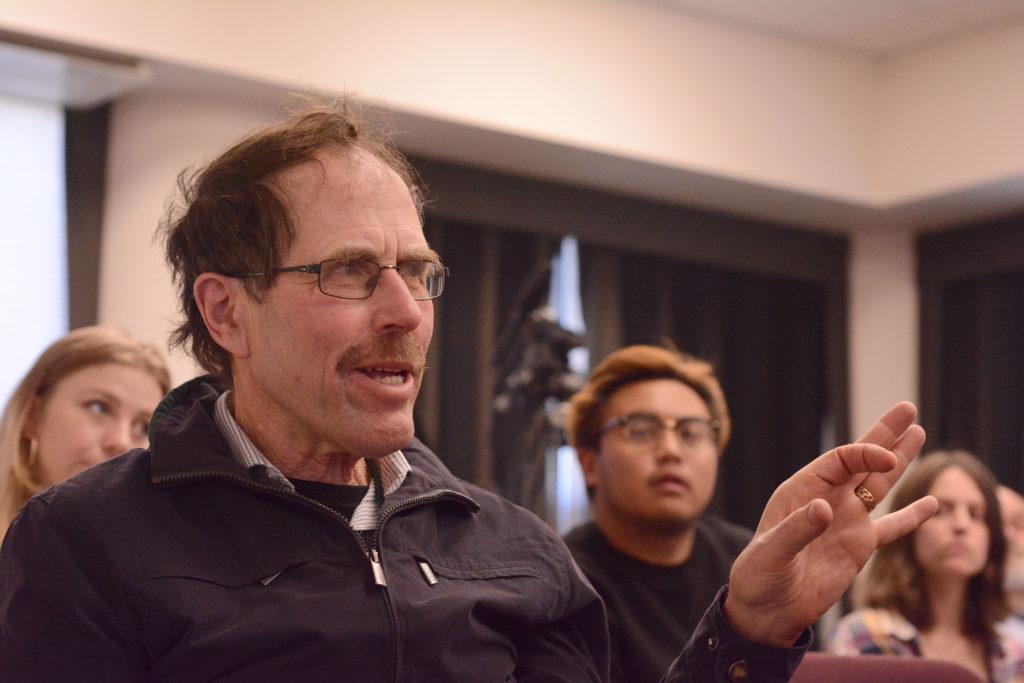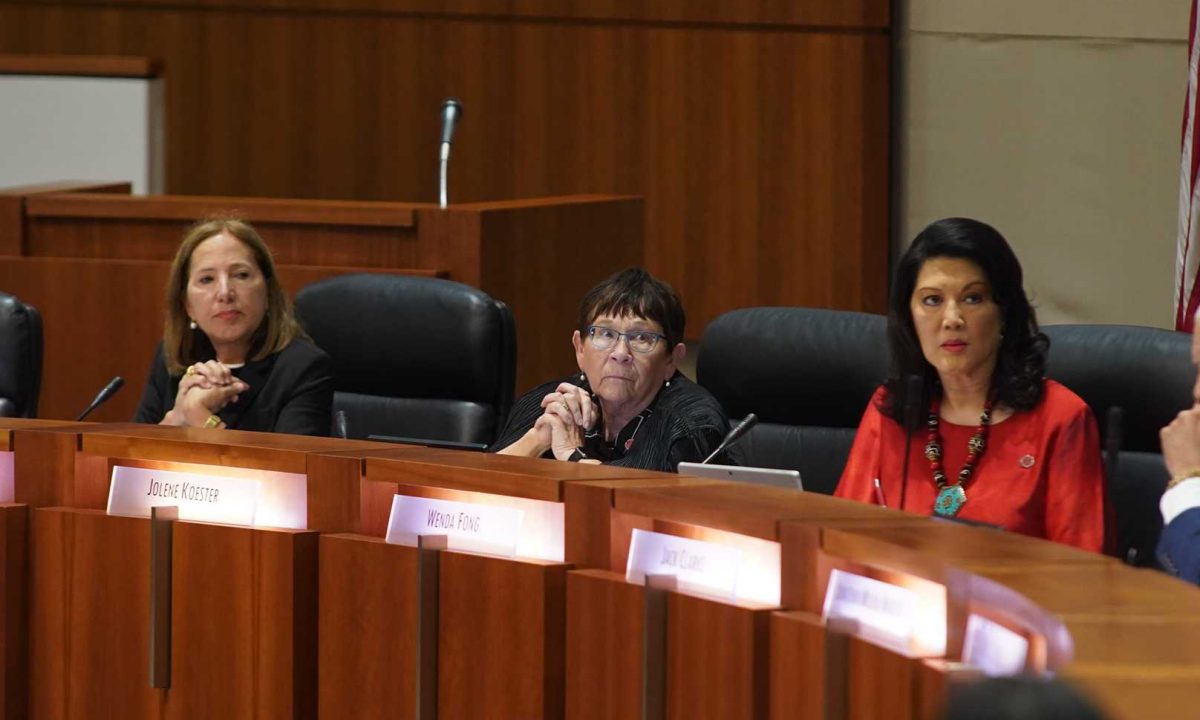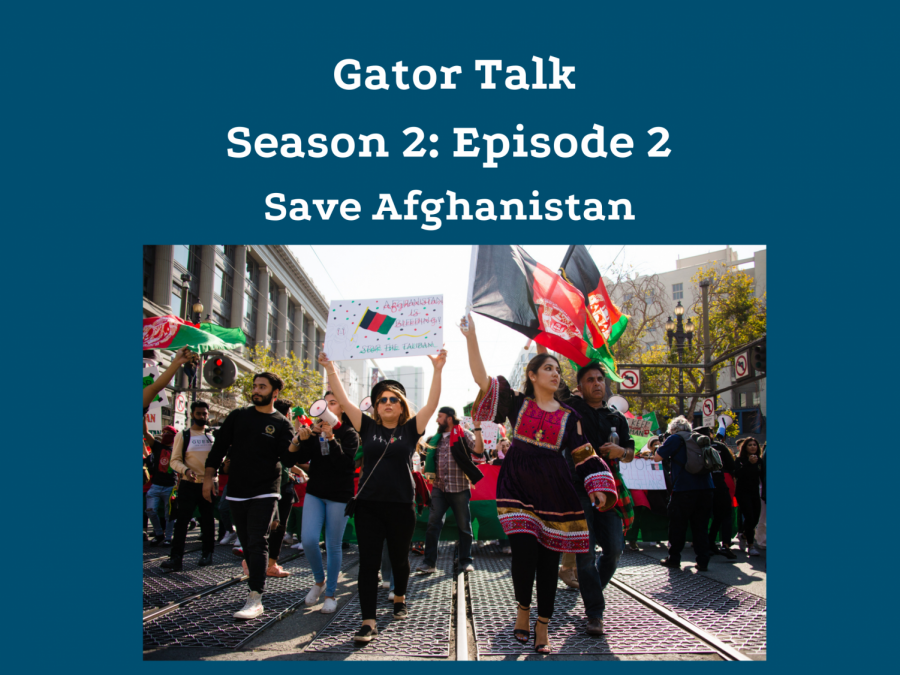An SF State alumnus who wrote for the student newspaper from 1967 to 1969 provided a first hand perspective about the university’s most tumultuous times as a documentary about the harrowing 1968 campus strike served as a backdrop.
Award-winning documentary Agents of Change depicts 50-year-old black and white film clips and images of riot police violently dispersing protestors at SF State College and Cornell University who were flooding campuses and buildings to demand more inclusivity for people of color.
The film is filled with chilling images of students being hit in the head and body with batons, sending blood streaming down faces as the universities chose to crush the strikes by force instead of negotiating protestor demands.
Lee Heidhues, SF State alumnus and then-student reporter with SF State Gater, was at the screening held in the Humanities building with about 60 SF State students and faculty. He was transported back to the horrible events.
“It was really depressing but many people think it was romantic, with a lot of action,” Heidhues said. “It wasn’t romantic at all, it was terrible in retrospect.”
The SF State Journalism Department showed the documentary as part of a series of events commemorating the 50th anniversary of campus strikes at SF State on Wednesday, Nov. 14.
Heidhues added he felt solidarity with the protestors 50 years ago.
“These were my friends and my classmates, and it’s something that lives with me 50 years after the incident,” he said. “I think it’s good for people to see what happened. To watch it just reaffirms my 50-years-later perspective.”
Heidhues remembered the mass arrests of about 450 students on SF State’s campus, as well as the “Gater incident” of 1967, when disgruntled members of the Black Student Union, some featured in the documentary, entered the SF State Gater Newspaper newsroom and had a physical altercation with staff in response to what was seen as racist coverage of the BSU.
Heidhues said he heard years later that the students were angry about a student editor’s opinion article comparing Mohammad Ali to the KKK.
Other reports at the time and in subsequent years said BSU students were angry that a Gater editorial demanded a stop to Carnegie Foundation funding that had been anticipated for BSU tutoring and other academic programs. And still other reports claimed BSU students were angry that the only black Homecoming Queen contestant lost the pageant after questionable ballot counting.
Either way, Heidhues said, he didn’t believe the Gater coverage was biased.
“I’d like to think we did a fair job at reporting what was happening at the time,” Heidhues said.
In the film, SF State strike organizer Romana Tascoe, who was the first student to be arrested, recalled how determined protestors were despite how awful it was when hundreds of students were rounded up by police.
“It was a horrible day, but it was also a season of awakening,” Tascoe said. “We realized we couldn’t turn back now.”
Meanwhile at Cornell University, student fighting for inclusivity faced armed police response as well as backlash from white students, which culminated in a cross-burning on a black sorority lawn. In the film, Cornell strike organizer Eric Evans said the violence against protestors galvanized their commitment to fight for their demands.
“That was the ‘coup de grâce’ that took us to a higher emotional level,” Evans said. “We were all angered and we were all ready to do something.”
After the film screening, current SF State journalism major Nevin Long said he was shocked to learn that several SF State students faced prison sentences ranging from six months to six years for striking.
“I commend the students on their bravery during the strikes,” he said. “Facing up to six years in prison is like looking down the barrel of gun.”
The directors of Agents of Change, Frank Dawson and Abbey Ginzberg, connected the strikes to similar struggles for Civil Rights and against the Vietnam War sweeping across the country during that time, and more recent efforts like the 2016 hunger strike at SF State to fight cutbacks to ethnic studies departments.
A Cornell graduate, Dawson is the Interim Dean of Career Education at the Santa Monica College Center for Media and Design and a former Chair of the Communication and Media Studies Department, and co-director Ginzberg is a Peabody Award-winning filmmaker.
It received the Jury and the Audience Awards for Best Feature Documentary at the Pan African Film Festival, and the Paul Robeson Award from the Newark Black Film Festival.








Lee Heidhues • Nov 19, 2018 at 8:00 pm
I was interviewed for the article. I appreciate the opportunity to have my thoughts, over 50 years later, put into print. One important piece that was inexplicably omitted are my harsh recollections of “The Gater Incident.” I described it as a “vicious assault on the free press.” I also asked two panelists who had participated in the “assault” three questions. 1. What was the motivation for this attack? 2. What do you think today? 3. Do you feel an apology is in order? One panelist issued an apology and acknowledged “violence is never good.” It would have been good journalism to include this in the story. I feel that The Gater Incident is still being rationalized by many people as appropriate because the Journalism Department in 1967 was allegedly too conservative. I say “rubbish” to that for two reasons. 1. The student reporters and professors were journalists doing a job, and 2. To physically assault journalists is wrong and criminal. Lee Heidhues, Class of 1969.